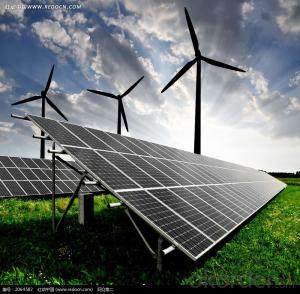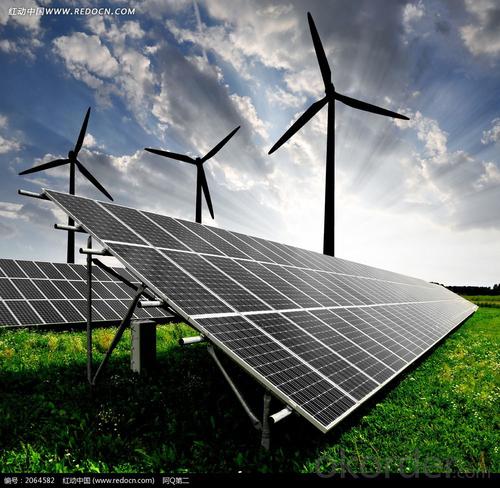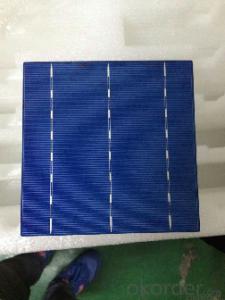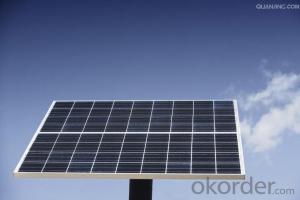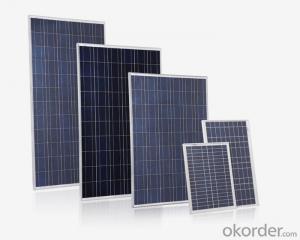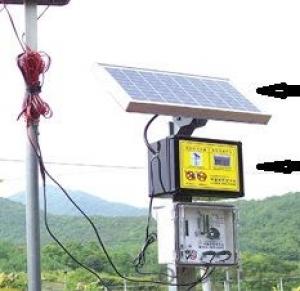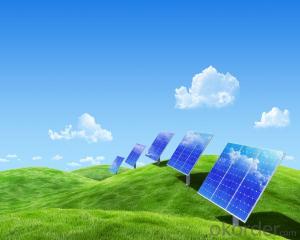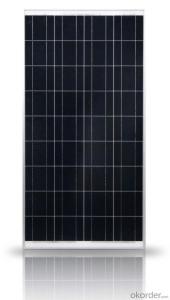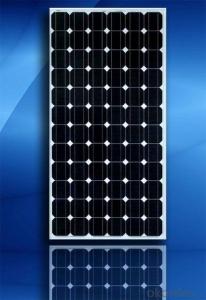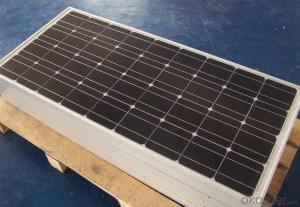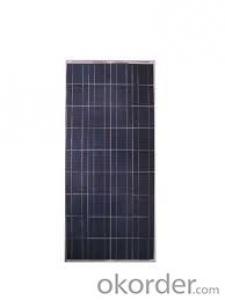Hot Carrier Solar Cells Poly Solar Panel with 25 Years Warranty for Hot Selling CNBM
- Loading Port:
- Qingdao
- Payment Terms:
- TT OR LC
- Min Order Qty:
- 10 set
- Supply Capability:
- 300000 set/month
OKorder Service Pledge
OKorder Financial Service
You Might Also Like
Polycrystalline Solar Modules
CNBM offers a range of small, medium and large polycrystalline solar modules, designed for a range of requirements.
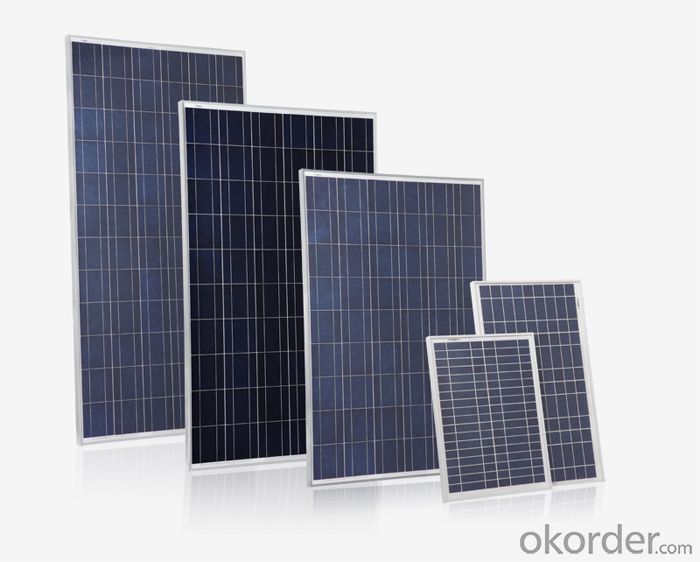
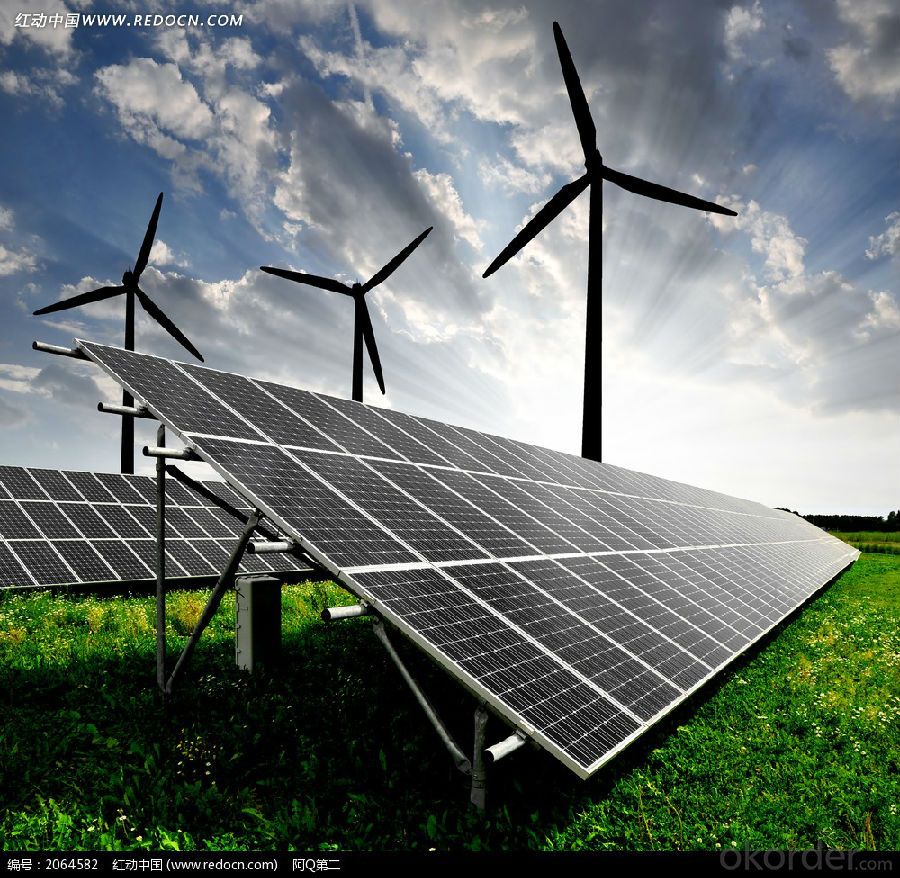
Specifications:
Tolerance | +/-3% |
Cell | Polycrystalline silicon solar cells (156 x 156mm) |
N0. of Cells | 60 (10 x 6) |
Dimension of Modules (mm) | 1650 x 990 x 40 |
Weight (kg) | 25.5 |
Limits:
Operating Temperature | -40~+85? |
Storage Temperature | -40~+85? |
Maximum System Voltage | 1000 VDC max. |
Hail Impact | Diameter of 28mm with impact speed |
Temperature and Coefficients:
NOCT | 48C+/-2? |
Voltage temperature coefficient (%/K) | -0.35 |
Current temperature coefficient (%/K) | 0.05 |
Power temperature coefficient (%/K) | -0.45 |
Characteristics:
Model: | SGM-200P | SGM-210P | SGM-220P |
Max-power voltage Vmp (V) | 29.2 | 29.4 | 29.41 |
Max-power current Imp (A) | 6.85 | 7.14 | 7.48 |
Open-circuit voltage Voc (V) | 36.5 | 36.69 | 36.9 |
Short-Circuit Current Isc (A) | 7.28 | 7.6 | 7.93 |
Max-power Pm(W) | 200 | 210 | 220 |
Model: | SGM-230P |
Max-power voltage Vmp (V) | 29.8 |
Max-power current Imp (A) | 7.72 |
Open-circuit voltage Voc (V) | 37.31 |
Short-Circuit Current Isc (A) | 8.19 |
Max-power Pm(W) | 230 |
STC: Irradiance 1000W/m2, module temperature 25?, AM-=1.5
Poly Crystalline Solar Panels Specifications Range
Maximum Power (Pm) | Dimension | Weight | Operating Voltage (Vmp) | Operating Current (Imp) | Open Circuit Voltage (Voc) | Short Circuit Current (Isc) |
0.45W | 140x80x10mm | 0.08kg | 3.3V | 150mA | 4.6V | 160mA |
1.0W | 162x140x10mm | 0.16kg | 7.5V | 150mA | 10.3V | 160mA |
4.5W | 269x251x23mm | 0.8kg | 16.5V | 0.27A | 20.5V | 0.3A |
10W | 420.1×268.9×22.6mm | 1.92kg | 17.5V | 0.58A | 20.5V | 0.6A |
20W | 425x502x50mm | 3.0kg | 16.8V | 1.19A | 21.0V | 1.29A |
30W | 593x502x22.6mm | 3.9kg | 16.8V | 1.78A | 21.0V | 1.94A |
40W | 655x537x50mm | 5.75kg | 17.3V | 2.31A | 22.1V | 2.54A |
50W | 839x537x50mm | 6.0kg | 17.5V | 2.9A | 21.8V | 3.17A |
65W | 1111x502x50mm | 7.2kg | 17.6V | 3.69A | 22.1V | 3.99A |
80W | 1204x537x50mm | 7.7kg | 17.6V | 4.55A | 22.1V | 4.8A |
- Q: Can I trust the suppliers for film solar that I found on alibaba ?
- Well, it really depends on what kind of suppliers you are dealing with, because as a matter of fact, some of the suppliers on alibaba are very tricky!
- Q: How do solar cells perform in high altitude environments?
- Solar cells perform better in high altitude environments due to several factors. Firstly, at higher altitudes, there is less atmospheric pollution and haze, resulting in increased solar irradiance. This means that solar cells receive more sunlight, leading to higher energy production. Secondly, the lower air density at high altitudes reduces the heat dissipation from solar cells, allowing them to operate at lower temperatures. This improves their efficiency as solar cells tend to perform more efficiently in cooler temperatures. Additionally, the cooler climate at high altitudes also helps to prevent overheating, which can degrade the performance and lifespan of solar cells. Overall, solar cells tend to exhibit superior performance and efficiency in high altitude environments.
- Q: Where and how can I find more information of Photovoltaic Cells Solar Panels? Can anybody share more about that?
- Photovoltaic cells produce electricity directly from sunlight. Photovoltaic cells are also called PV cells or solar cells. Many PV cells are used in remote locations not connected to the electric grid. Photovoltaic cells comprise the main component in solar panels and are also used to power watches, calculators, solar lights, and lighted road signs.
- Q: What is the cost of producing a solar cell?
- The cost of producing a solar cell can vary depending on various factors such as the type and size of the cell, manufacturing technology, materials used, and economies of scale. On average, the cost ranges from $0.15 to $0.40 per watt for the production of a standard crystalline silicon solar cell. However, with advancements in technology and increasing global demand, the cost has been steadily decreasing over the years.
- Q: Can solar cells be used for desalination?
- Yes, solar cells can be used for desalination. Solar energy can be harnessed by solar cells to power desalination plants that convert seawater or brackish water into freshwater through processes like reverse osmosis or multi-stage flash distillation. This sustainable approach reduces reliance on traditional energy sources and offers a potential solution to address the global water scarcity issue.
- Q: Can solar cells be used for powering data centers?
- Yes, solar cells can be used for powering data centers. Solar energy can be harnessed and converted into electricity through solar cells, which can then be used to power the energy-intensive operations of data centers. This renewable energy source can help reduce the environmental impact of data centers by decreasing their reliance on fossil fuels and mitigating carbon emissions. However, the feasibility of using solar cells for data centers depends on factors such as the availability of sunlight, the size of the data center, and the energy requirements of the facility.
- Q: Can solar cells be used in oil and gas exploration?
- Solar cells can indeed be used in oil and gas exploration. They can be employed to power various equipment and devices used in exploration, such as remote monitoring systems, sensors, and data collection devices. Solar cells offer a sustainable and reliable energy source in remote locations where access to traditional power grids might be challenging. Additionally, their low maintenance requirements and environmental friendliness make them an attractive option for the oil and gas industry.
- Q: What is the history of solar cell development?
- The history of solar cell development dates back to the 19th century when the photovoltaic effect was first discovered by French physicist Alexandre-Edmond Becquerel in 1839. However, it wasn't until 1954 that the first practical silicon solar cell was developed by Bell Labs scientists. This breakthrough led to the commercialization of solar cells and their initial use in space applications, such as powering satellites. Throughout the 1960s and 1970s, solar cell technology continued to advance, primarily driven by research and development efforts in the United States. The energy crisis of the 1970s further fueled interest in renewable energy, including solar cells, leading to increased investment and technological advancements. In the 1980s and 1990s, solar cells became more efficient and affordable, making them increasingly popular for off-grid applications, such as powering remote locations and providing electricity to rural communities. Governments and organizations worldwide started implementing policies and incentives to promote solar energy adoption. In the early 2000s, there was a significant growth in the solar industry, driven by technological improvements, increased manufacturing scale, and declining production costs. This led to the widespread adoption of solar panels for residential and commercial use, as well as grid-connected solar power plants. Today, solar cells continue to evolve, with ongoing research focused on improving efficiency, durability, and reducing costs. The integration of solar cells into various applications, such as building materials and consumer electronics, further expands their potential. The solar industry plays a crucial role in the global shift towards clean and sustainable energy sources.
- Q: How do solar cells impact national energy policies?
- Solar cells have a significant impact on national energy policies by driving the shift towards renewable energy sources. As solar power becomes more affordable and efficient, governments are incentivized to promote its adoption through various policies and initiatives. This includes providing subsidies and tax incentives to encourage investment in solar energy, setting renewable energy targets, and implementing net metering policies that allow consumers to sell excess electricity back to the grid. The wide-scale deployment of solar cells helps diversify energy sources, reduce dependence on fossil fuels, and mitigate climate change, thereby shaping and influencing national energy policies.
- Q: Can solar cells be used for powering communication towers?
- Yes, solar cells can be used for powering communication towers. Solar energy can be harnessed using photovoltaic cells, which convert sunlight into electricity. These cells can generate power throughout the day, making them a reliable source of energy for communication towers that require continuous operation. Additionally, solar cells can be integrated with batteries to store excess energy for use during nighttime or cloudy periods, ensuring uninterrupted power supply to communication towers.
Send your message to us
Hot Carrier Solar Cells Poly Solar Panel with 25 Years Warranty for Hot Selling CNBM
- Loading Port:
- Qingdao
- Payment Terms:
- TT OR LC
- Min Order Qty:
- 10 set
- Supply Capability:
- 300000 set/month
OKorder Service Pledge
OKorder Financial Service
Similar products
Hot products
Hot Searches
Related keywords
